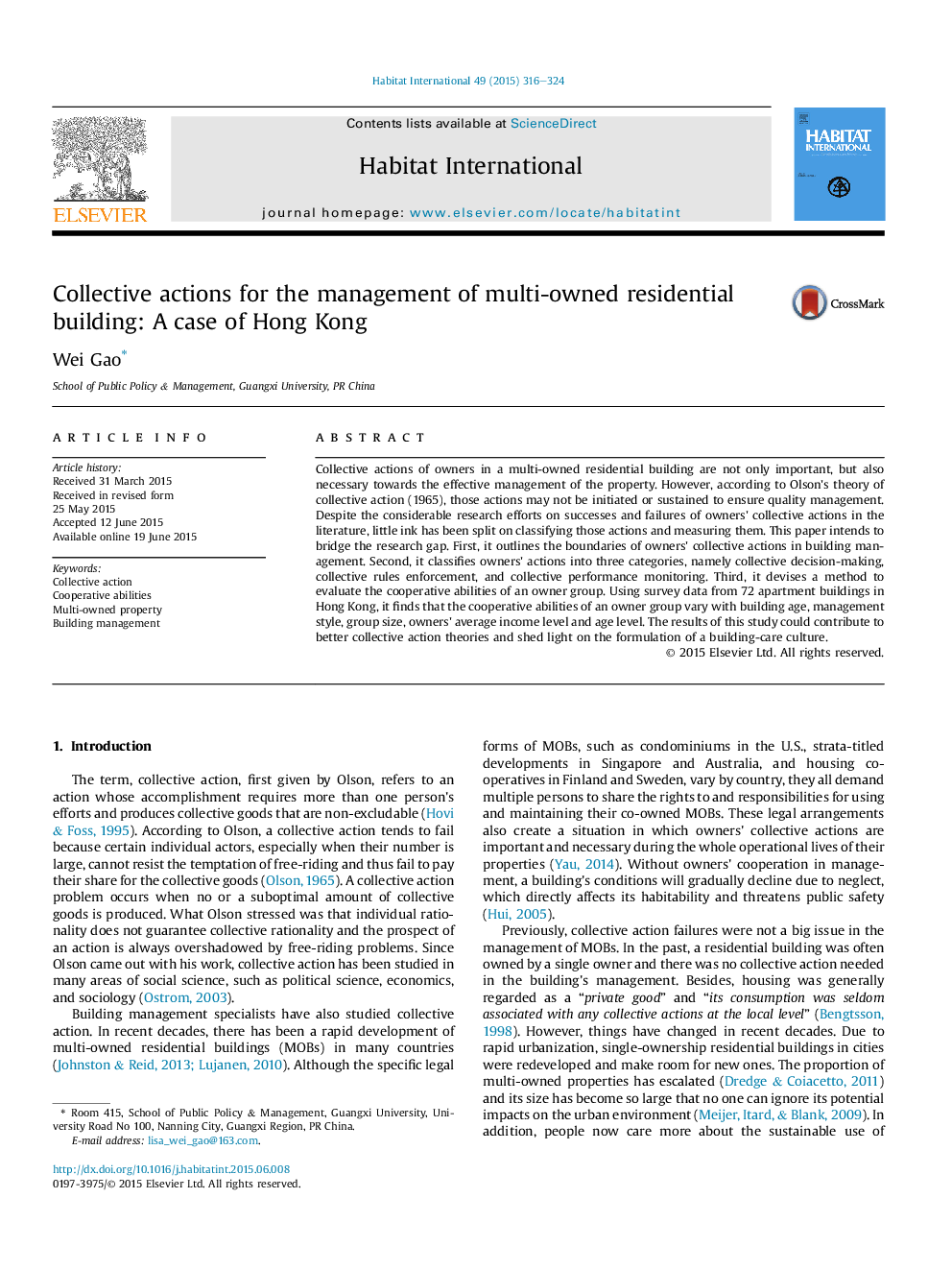| Article ID | Journal | Published Year | Pages | File Type |
|---|---|---|---|---|
| 7456193 | Habitat International | 2015 | 9 Pages |
Abstract
Collective actions of owners in a multi-owned residential building are not only important, but also necessary towards the effective management of the property. However, according to Olson's theory of collective action (1965), those actions may not be initiated or sustained to ensure quality management. Despite the considerable research efforts on successes and failures of owners' collective actions in the literature, little ink has been split on classifying those actions and measuring them. This paper intends to bridge the research gap. First, it outlines the boundaries of owners' collective actions in building management. Second, it classifies owners' actions into three categories, namely collective decision-making, collective rules enforcement, and collective performance monitoring. Third, it devises a method to evaluate the cooperative abilities of an owner group. Using survey data from 72 apartment buildings in Hong Kong, it finds that the cooperative abilities of an owner group vary with building age, management style, group size, owners' average income level and age level. The results of this study could contribute to better collective action theories and shed light on the formulation of a building-care culture.
Keywords
Related Topics
Social Sciences and Humanities
Social Sciences
Development
Authors
Wei Gao,
